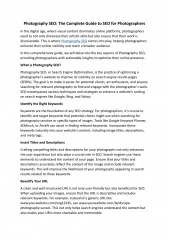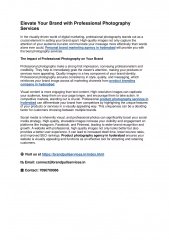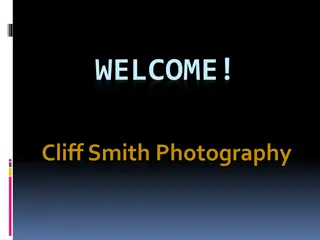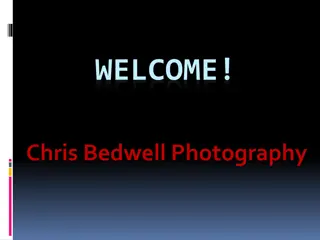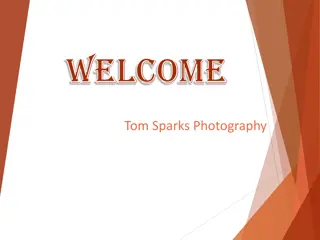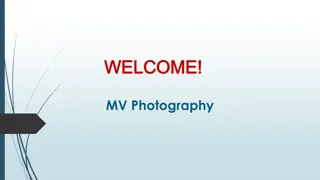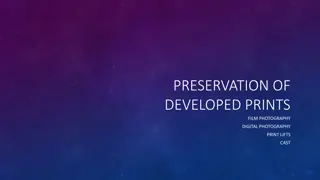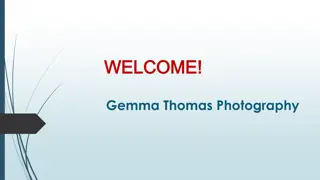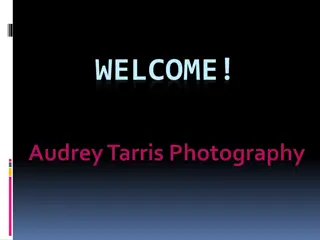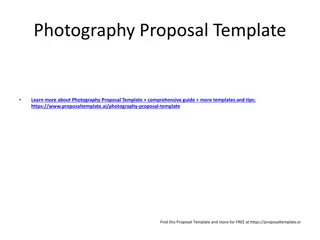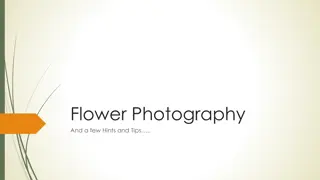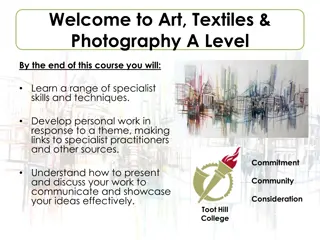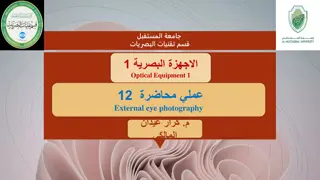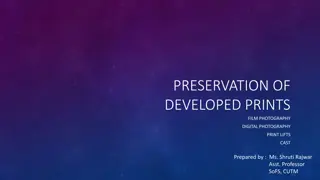Evolution of Early Photography Techniques
Calotype and Daguerreotype were two significant early photographic processes, introducing negatives and paper positives versus copper plates, respectively. William Henry Fox Talbot and Louis Daguerre were key figures in revolutionizing the art of photography with their inventive processes in the 19th century. Wet Collodion Photography emerged as a breakthrough technique utilizing glass plates coated with light-sensitive salts and collodion, allowing for the production of bigger images and the creation of multiple prints from a single plate. These techniques marked a transformative era in the history of photography.
Download Presentation

Please find below an Image/Link to download the presentation.
The content on the website is provided AS IS for your information and personal use only. It may not be sold, licensed, or shared on other websites without obtaining consent from the author. Download presentation by click this link. If you encounter any issues during the download, it is possible that the publisher has removed the file from their server.
E N D
Presentation Transcript
Calotype Calotype- the first photographic process utilizing negatives and paper positives, invented by William Henry fox Talbot in the late 1830 s. It is paper coated with silver iodide. Talbot came up with the name calotype from the Greek term for beautiful image. Talbot's process became the basis of modern photography. soliloquy of the broom gives evidence of his conviction that photography might offer a creative artistic outlet for those without the manual talent to draw or paint.
"The Open Door" 18.8 x 23.1 cm. By 19th century English polymath William Henry Fox Talbot, an inventor of photography.
Daguerreotype An early photographic process (developed from the camera obscure) developed by Louis Daguerre A copper plate is coated with iodine, when the surface is exposed to light and dipped in a salt solution, an image is produced on the plate. 3-D quality Made in the early 1800s Very realistic, they became relics for people No copies, it s a precious individual It completely revolutionized the ability to realistically portray images
File:Daguerreotype Daguerre Atelier 1837.jpg Louis DaguerreL Atelier de l'artiste(The Artist s Studio) 1837 Daguerreotype Soci t Fran aise de Photographie, Paris
File:Abelincoln1846.jpeg Nicholas H. Shepherd Abraham Lincoln 1846 Daguerreotype Library of Congress
220px-Edgar_Allan_Poe_2 Edgar Allan Poe William S. Hartshorn 1848 Daguerreotype Library of Congress
Wet Collodion Photography What is Collodion? Collodion= a thick liquid, made of nitrated cotton that has been dissolved in alcohol and ether How is the technique employed? A glass plate is coated with a mixture of light sensitive salts and collodion, once most of the liquid has evaporated the plate is submerged in a chemical compound (silver nitrate in early days, but with time the process changes) then QUICKLY placed into the camera for exposure. (Quickly, because the plate must be wet in order for the image to be captured). Once the plate has been exposed it must be QUICKLY brought to a darkroom to be bathed in an acidic solution that develops the image. The Benefits of Wet Collodion Technique The photographer can produce several prints from one plate in record time, or use the plate itself as a collodion positive (the desired image) vs. collodion negative. The plates are BIG!! Meaning bigger pictures!!!
Limitations of the Technique A dark room is needed, meaning the technique is not very portable. The plates are huge and heavy!!! How is a photographer going to photograph nature? He/She is going to need a mule, maybe a couple of them. Exemplary Use



